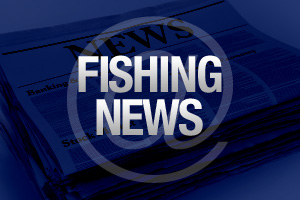International auctioneers, Bonhams is to offer a selection of early carved
and cased fish, rods, reels, and flies in an Angling Sale on
2003
The sale, which will take place at Bonhams in Honiton, comprises more
than 300 lots, most significant of which is a worthy catch of carved wooden
fish that date from the late 19th century.
Pick of the catch is an exceptionally rare pair of half-block salmon, caught
on consecutive casts by L. M. Martin at Ringwood on 8 May 1907, Hampshire,
which represent one the finest examples of carved fish to be offered at
auction in recent years. The catch marks a feat only known by the most
accomplished, and luckiest, of anglers. The two fish originally weighed 24
1/2lbs and 18 1/2lbs respectively, and are mounted on mahogany backboards,
which bear the oval stencil mark Farlow & Co., 191 Strand London on the
reverse (£6,000-8,000).
Carved fish originated from anglers seeking new ways to immortalise their
catches by transforming them into naturalistic trophies. The custom derived
from
aristocratic circles and was beginning to achieve recognition as a new
competitive sport. As the sport grew so did the need to preserve the
largest and most formidable fish for posterity. Taxidermy, although an
impressive alternative, was deemed by some as an unreliable way of saving
the fish. The first wooden trophy fish was carved by John B Russell
(1819-1893) at his studio, Focharbers, in
wooden fish for
advertising the models in its catalogue.
Charles Farlow established his company in 1840. The original premises were
based at 221
to a larger building at 191
successful business meant giving his customers a unique care service and, as
he said at the time, he aimed to supply the Angling Brotherhood of the
Nobility, Gentry and Public at large. At this time the company did not have
a mail order service although a catalogue of products was issued regularly
and advertisements for the fish carving service attracted a great deal of
interest and many commissions for the Focharbers studio.
The method of carving fish involved meticulous attention to detail in order
to create a fish that was realistic. The process involved placing the
specimen fish on a piece of paper, drawing around it and then sending the
template to a firm of carvers. From the drawing a wooden representation
would be made and then decorated sympathetically to imitate the species.
Additional information such as girth, approximate weight and the clarity of
the water where the fish was caught also aided the carver and painter.
A collection of three fish caught on various on the River Avon by members of
the Gladstone family on 20 May 1929 include a three quarter block carved
salmon replica fish caught at Ringwood. With a weight of 48 1/2lbs, a
length of 49 inches and a girth of 27 inches the fish would have been the
most impressive catch of the day. It will be sold with a framed plan of The
River Portion of the Ringwood Estate and is expected to fetch between
£4,000-6,000. A half block salmon from the same collection was caught on
March 1920
fish, a fact that is recorded in an inscription on the mount (£2,000-4,000).
However, a single owner collection of five Farlow fish dating from the early
1900s include a Pollock weighing 3lbs 4oz (£1,000-1,400), a king carp at
3lbs 9 1/2oz (£800-1,200), a trout (£700-900), a pike (£800-1,200) and a
tench (£800-1,200). It is rare to find smaller fish bearing the C. Farlow &
Co labels as the firm was most famous for its trophy salmon and larger
carved examples. It is thought that apprentices may have carved the fish or
that they were the trophies of a keen holiday angler.






